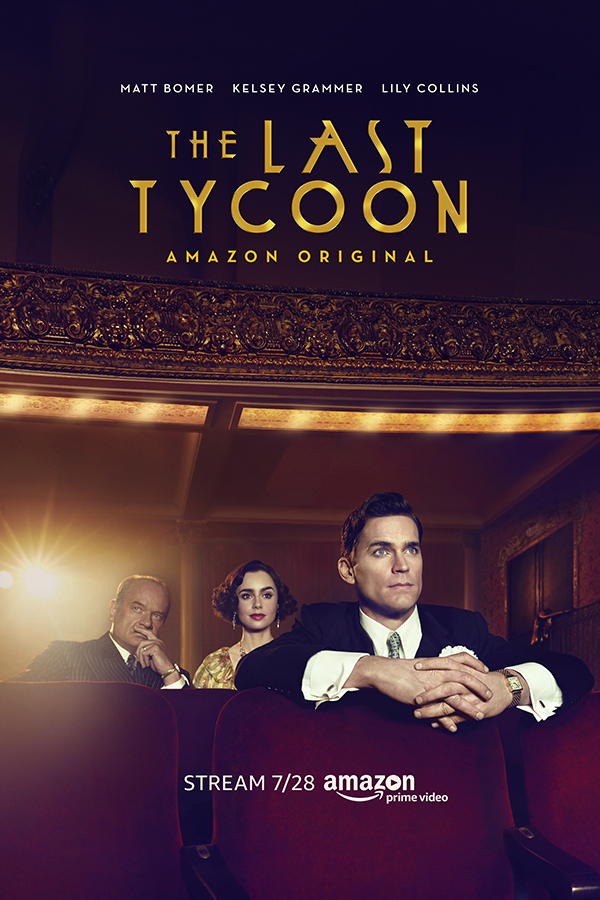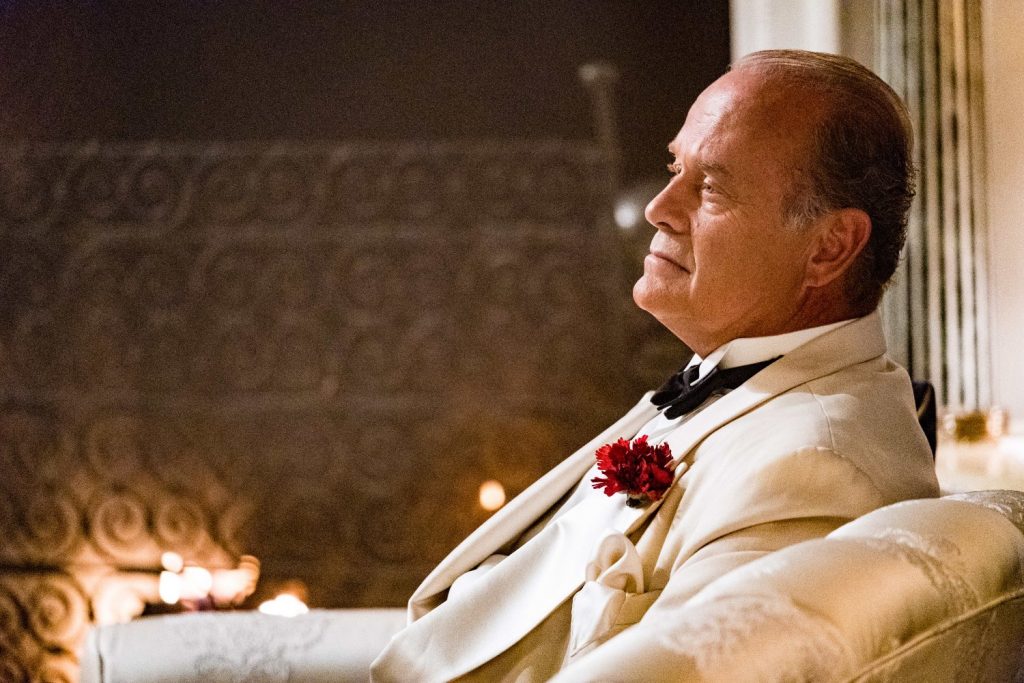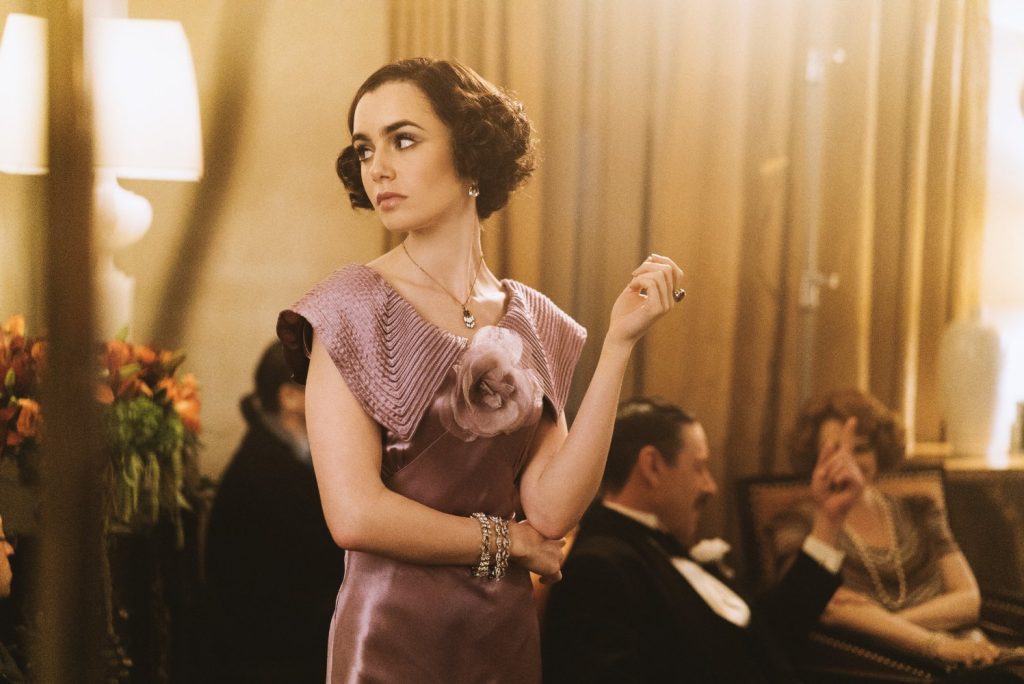
Adapting Fitzgerald Novel
Matt Bomer: It’s an unfinished novel. His editor finished the book for him based on the notes that he had. I’d read pretty much everything else Fitzgerald had written besides this novel. But in terms of a series and stretching that out and sort of taking the nucleus of the ideas and themes that Fitzgerald was presenting in the novel and spreading that out into a series, being unfinished kind of gives you some creative license. I think Billy Ray and Chris saw a lot of opportunity in that. I don’t know why it’s taken so long. Fitzgerald is notoriously difficult to interpret for the screen, but at the same time his worlds are so alluring and so beautiful and so heartbreaking that we always come back to him again and again.
The 1930s
MB: There was so much going on in the world at that time. We were at the height of the Great Depression in the United States. Germany is on the move in Europe. The Spanish Civil War is going on. And everybody is still flocking to go see the movies. So I thought in terms of the world it seemed like a very tumultuous time that in some ways was reflective of some of the tensions we feel in the air now. And that interested me. The studio system has always fascinated me. I guess we’re all lucky that we’re not beholden to contracts that have us doing 50 pictures a year. But at the same time, there was this great sense of security within the studio system. They maintained your image. They made sure you were employed. They took care of your wardrobe. It was a package deal. The sort of machinations going on behind the scenes were always interesting to me. When this came my way I had just finished reading Nathaniel West’s “Day of the Locust”, which takes place in a similar time period with some similar kind of seedy underbelly of Hollywood themes. I was just weighing out all those things and weighing out the debate of art versus commerce that I think we all have to do in this industry from time to time. I have a yearly cathartic meltdown about it. How do you stay commercial but also try to be an artist. Will you even get the chance to be a part of the commercial system? And so those were things I was thinking about when Billy brought it my way.

Thalberg’s Shadow
MB: With the exception of the book, Thalberg’s life was almost the main basis of my research for the character. I read that giant tome on Thalberg, became fascinated with him. I think so much of the backstory we created for Monroe was about him being this guy who had a congenital heart defect. From the time he was born he was stamped with a label of impermanence and now his whole life is trying to create a perfect picture, to make stars, to make something that’s permanent and a legacy in a limited amount of time that he has. I researched his films, I read his books, I took little notes from here and there, I obviously relied heavily on the novel as well. But imagine my surprise when suddenly Irving Thalberg was a character on the show. They made him a character so we weren’t beholden to his mythology. But it was certainly for the pilot, the nucleus for the character.

Hollywood in the Past
MB: There were some really great things about it. It was a producer’s medium at the time. People like Irving Thalberg and Louis Mayer and Sam Cohen, all those people, were really had the creative control. So as an artist you were very much a commodity and you were shackled to the studio. But in exchange for that you had your wardrobe, your P.R., your next 10 pictures covered, a fixer should you mess up around town. So there was a sense of security that I think came from that. And I think there were artists that were somehow able to, like Gary Cooper, who was able to float from the silents into the talkies and create a persona for himself that enabled him to play lots of different roles within the confines of the studio system. He wasn’t just typecast. But I’m grateful that we live in a day where we’re not, we don’t have to sell our souls to one entity and be there for the rest of our lives, and hope that if we want to do something else eventually another studio will buy out contract out.
How Are Stars Different Today?
MB: You’ve got to have a great social media following. It’s definitely a formula that’s evolving and changing. I think my mindset for this particular project was within the confines of the studio system and how do you produce a star in that. And I’m sure there is some aspect of that now but, it depends. I think stars now can happen in so many different ways. You have that great girl doing “Insecure” on HBO who, I think she started out doing her own thing on YouTube right? And then you have someone who may get a shot in a tiny independent film that happens to get distribution and suddenly becomes huge in the zeitgeist. And then you have the studio system where you have to go and screen-test and there’s five other people and maybe you sneak through the cracks there and then they put an image together for you and hire you a stylist and a publicist and there you are. There are probably a lot more avenues to becoming a star now than there were in the 1930s when you came and met these studio moguls in whatever fashion you were able to get in there and they saw something in you and then crafted something for you that was really under their creative control.
Aging?
I have some gray hairs in my beard and I’ve earned them all being a co-parent of three children, three boys. I’m sure genetics or something. I’ve also had to do movies like “Magic Mike” and things like that where I’ve had to be really regimented about my diet, maybe that’s influenced it. It’s not any special potion or anything that I found or discovered. I just try to take care of myself. I remember reading a lot about James Dean and all those people, if you go back to Stella Adler and Lee Strasberg, and you look at those great actors that came out of that studio like he and Brando, as an actor you have to keep your body in a place where you can launch into anything, where it can be a relaxes vessel where it can be physically effective at any given moment. I have always been inspired by actors like that, and Paul Newman, who made sure they took care of themselves, not in a vain way but just so that they had a nice neutral place to launch into any role.
Working in TV Vs. Film
MB: I’m not going to lie, that was a really attractive aspect of this job is that we were going to tell a story about Hollywood in Hollywood. It did turn into 60, 70 hours weeks so I think I saw the kids when I put them to bed on Monday night and then again on Saturday morning. But it was so great to not have to be on a plane and to be able to connect with them over the weekend. Kids reframe everything. You’re never number one on the call sheet again once you have children. They will be the first to put everything into perspective for you and I’m incredibly grateful for that and to have that.
Style of House
MB: It’s an English country style house and then inside it’s sort of Hollywood Regency aspect to it. And very kind of Ralph Lauren country house mixed in with a little bit of Hollywood Regency. And then Simon and I have our little man cave. It was supposed to be the one spot where we could be adults but obviously that’s been taken over by the children too. We have a koi pond out back, a reflective space and a pool. I actually work out in our garage, and it’s not a fancy exercise room by any means.
Costume Design:
MB: I think Janie Bryant is a genius. I think what she did for not only the show “Madmen” but really men’s fashion at large with that show was a sea change. All of a sudden you were going to premiers and seeing young people in tailored suits with pocket squares. To collaborate with her and wear her costumes was an honor.
The costumes don’t reflect on my own style. I definitely try to wear some double-breasted suits from time to time but the waistline, the pant width, the way they were tailored was so different back then. But I will say, the most important thing when you’re acting is that it informs your acting, the way it’s tailored, the way you have to hold yourself when you have suspenders and a form fitting double-breasted suit. I had to take posture classes to be able to make sure that…people in the 30’s especially there’s this great theme of self reinvention. This is someone who used to be Milton Sternberg from the Bronx and is now Monroe Stahr. And part of that is the way he carries himself in the world. And the last thing I wanted to do was be slouching in a three-piece suit all the time, a double-breasted suit all the time.
Home Comfort
MB: When I’m at home it is all about comfort, not only for me but also because I get a lot more snuggles and hugs from the kids that way. But yeah, I’m jeans, t-shirts, sweatpants. I try when I go out to make and effort and to let people know that I’m grateful to be asked to be at something like this. I’m always just looking around and watching other people and seeing things I’m seeing on the street when I’m walking around Manhattan or in a magazine or just whatever inspires me. Maybe it’s an art exhibit I go to. It can really kind of come from anywhere. And I have help. I have a lot of people who go, no, don’t wear that, don’t wear that and do wear this instead. I can’t take sole credit for anything.
My partner helps me, and I rely on him constantly. I think he actually, we’ve gone through a process of him being really engaged about it and then being thoroughly annoyed and put out about it and now he’s back to being engaged about it. But there are so many times that I’ve held up two different things and he’ll point to one of the other. I definitely rely on him.
Working with Stylist
I do, at times, with Jeanne Yang, and sometimes I do my own thing. It just depends really on what’s going on, how much press I have to do, am I going to be able to be a parent and work and put together nine outfits in a row for a press tour at the same time.
The Character
MB: When we first meet him, he’s still obviously reeling from the loss of his wife. They had a very complicated relationship but he did love her. And his whole M.O. as legacy, that’s more important than even the romances, the legacy, some kind of permanence in the world, making the perfect movie, methodically approaching perfection about everything in the industry. So he’s reeling from that and he still hasn’t given up her ghost, so much so that he’s subconsciously projecting that onto Kathleen when h meets her. And she understands that and then their relationship deepens. But I think there is a little bit of a remove about him, because of his heart condition, because he knows that ultimately the goal is to create some kind of permanence. And obviously making a star out of Kathleen, that’s a way to find legacy as well. So yeah, it is a flaw. Is that what you’re asking, is that his flaw? Did that answer your question?
I love that he had some shadow on that aspect and that he did have this sort of Achilles heel of a flawed romantic life where he is projecting his dead wife onto another woman. And to be honest, I love flaws. I wish Monroe had a lot more flaws to be honest with you. I know that he is seen as this golden boy but to me he’s also somebody who will cut you right out of the…kick you right off the lot if you’re not writing the picture he wants or if you’re not looking right, or whatever it might be, there is that sort of severity about him that I would love to explore more to be honest with you.
Kelsey Grammer
MB: I speak about Pat and Monroe first and then I’ll go off on my love fest on Kelsey. What I loved is that it’s a symbiotic relationship. Not only is it paternal, it’s father/son, even though it’s a little incestuous there with his wife, but it’s also, they couldn’t do it without each other. They represent the debate of art versus commerce. And at the end of the day it is business and you have to maintain a bottom line in order to keep doing what you do. Monroe is trying to sneak art in there, trying to sneak messaging in there, social commentary in there and you can’t always do that. And what I loved about a lot of the scenes with Monroe and Pat is that, if you look at their lines individually they’re both right. I would look at Pat’s lines and think, this is a very rational, correct argument that he’s making. And I think it’s a dialogue and an argument that will always be in our industry. We’re lucky that studios have these production shingles now that sort of try to bring in the art-cred films and that’s how we get our art. In this day and age the people who used to write “Kramer vs. Kramer” are writing “Captain America – Civil War”. And that’s why those Marvel movies are so good. So that debate of art versus commerce and how to maintain the income and still sneak art in there I think will always be relevant.

In terms of Kelsey, everyone feels like they know Kelsey Grammer. He’s been on TV since I remember watching TV as a boy, or in the beginning of my consciousness of watching TV. And so, it’s hard to not have unfair expectations of people that you’ve been watching for 20 years on TV. But he just, and it’s rare that those expectations are exceeded but he was one of the few cases where that happened. He is such an openhearted, loving person. I relied on him heavily. I was really there to learn from him and watch him because he’s one of those actors who could read a phonebook and you’d be enthralled. He just has that great baritone voice and that presence about him. It was fun to play and interact with what we were representing because I wanted, even though Monroe has a power about him, he as that heart defect so I wanted there to be a fragility to him and how he carried himself in the world even if it was just his physical appearance at times, so that would be in direct opposition to Pat who was this tank. He’s a lovely man and an incredible parent, a great husband and I loved working with him.
He’s just an incredible professional who’s been doing it for so long that you’re there to watch and learn from him. He comes with an open heart. He’s incredibly collaborative and can pretty much do anything as an actor. I was talking with Rosemarie DeWitt, we were at a table reading and who is herself an incredible actress, we were just watching Kelsey read, and he really is one of those actors who can just do anything. He can do anything. You can put anything in front of him and he’ll make it arresting and interesting.
Lily Collins

MB: I love working with her. She is a consummate professional. She’s so prepared on set. She has a strong point of view about her character. She’s incredibly collaborative. Has a beautiful attitude. And is truly as beautiful inside as she is on the outside which is saying a lot because she has, to me, a Liz Taylor type of beauty. She’s that gorgeous. She’s luminescent and the camera loves her. If you look at the work she’s done in the past year just between “To the Bone” and “Okja” and this, she’s really becoming one of the more interesting actresses of her generation.










